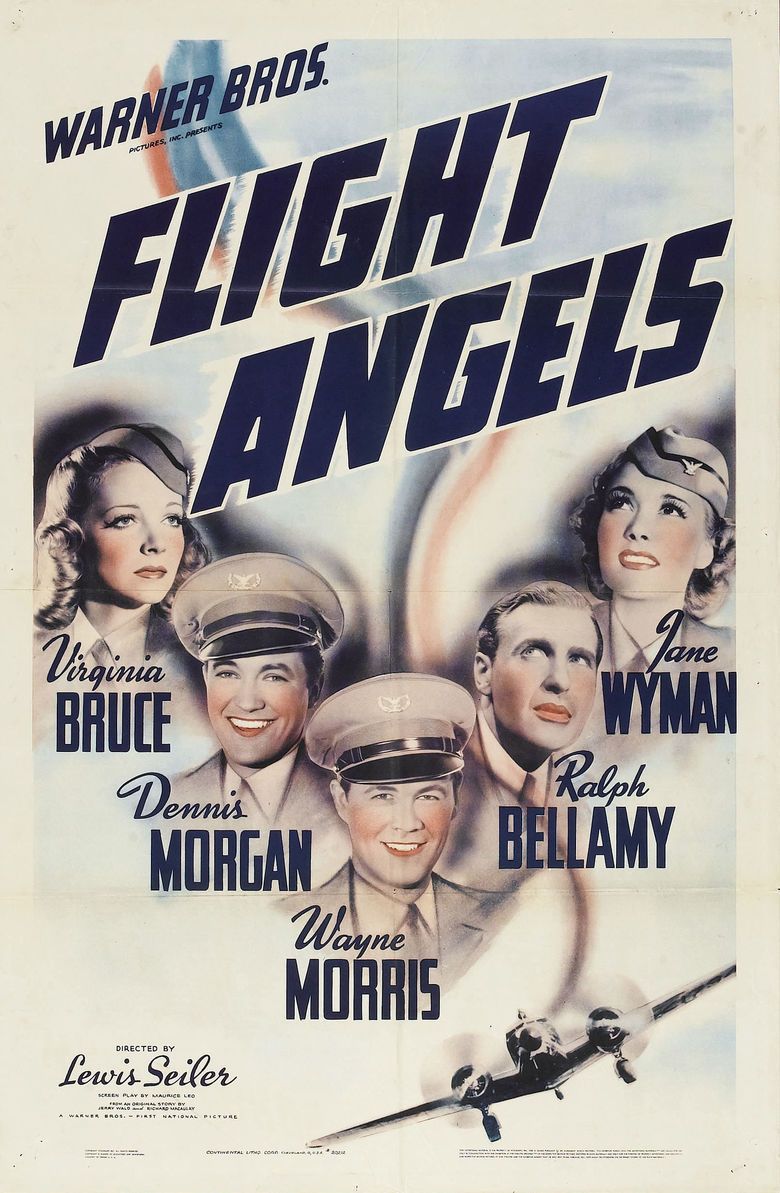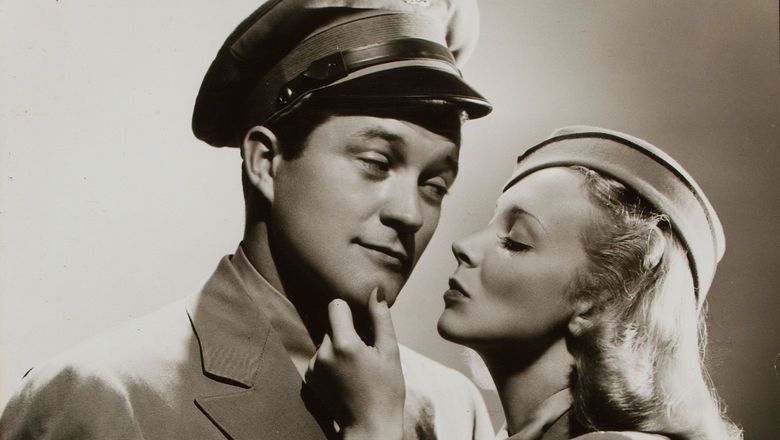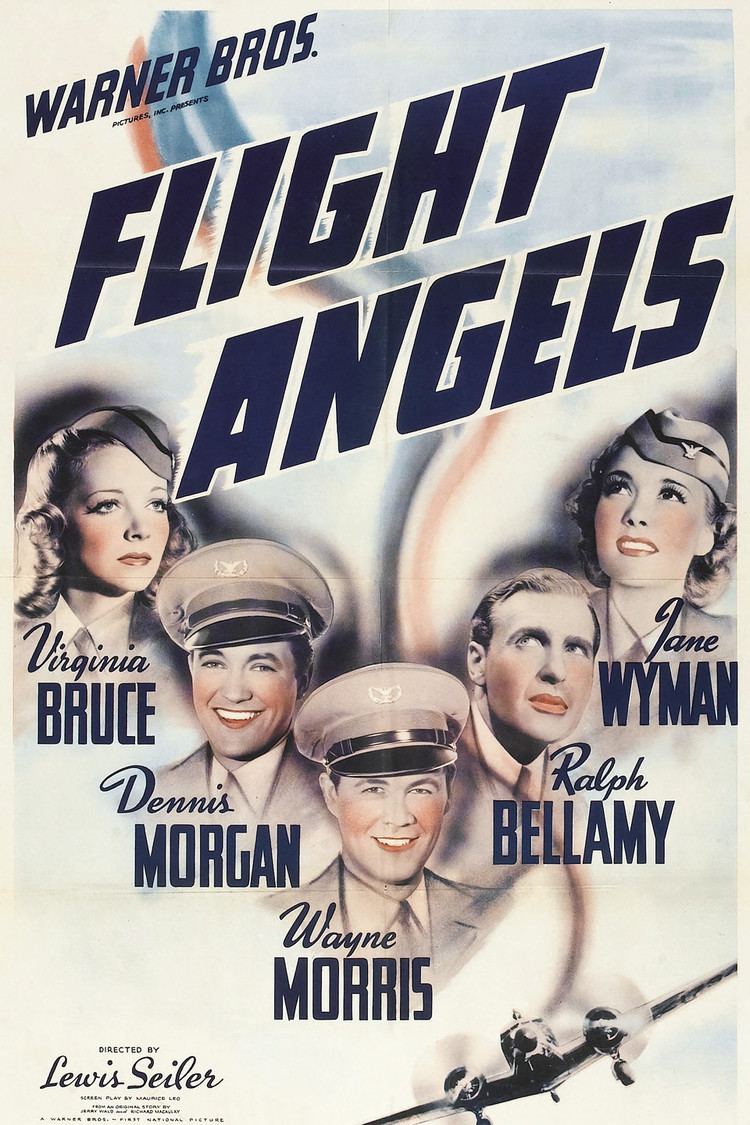Flight Angels
6 /10 1 Votes6
Country United States | 6/10 IMDb Duration Language English | |||||||||||||||||||||||||||||||||
 | ||||||||||||||||||||||||||||||||||
Release date June 18, 1940 (1940-06-18) Genres Drama, Comedy, Romance Film Distributor Warner Bros. Entertainment Cast (Mary Norvell), (Chick Farber), Wayne Morris (Artie Dixon), (Bill Graves), (Nan Hudson), (Lt. Parsons)Similar movies Dancer in the Dark , The Eye , Boeing, Boeing , Fly Me , I'm a Mitzvah , Some Girls Do Tagline Women Are TOUGH Angels... They Can Handle Anything That Flies... Except A Pilot! | ||||||||||||||||||||||||||||||||||
Flight Angels is a 1940 aviation film directed by Lewis Seiler from an original story by Jerry Wald and Richard Macaulay. It starred Virginia Bruce, Dennis Morgan, Wayne Morris and Ralph Bellamy as airline employees, flying Douglas DST airliners. The basic premise of the film is to accurately describe the training and operational conditions of an airline, which is faithfully depicted as stewardess and pilots go through the daily routine of flying in the 1940s.
Contents

Plot

Although "ace" commercial airline pilot, Chick Faber (Dennis Morgan) is grounded by Flight Superintendent Bill Graves (Ralph Bellamy) when a flight physical reveals that his eyesight is failing. Aided by stewardess Mary Norvell (Virginia Bruce) and her friend, Nan Hudson (Jane Wyman), Graves persuades Chick to take a job as teacher in the school for stewardesses. While he remains at the airline, along with engineer, Artie Dixon (Wayne Morris), he continues work on the design of a secret research aircraft, he calls the "stratosphere ship" that will revolutionize commercial aviation by flying faster and higher than any current type.
After Farber and Norvell get married, he finds that teaching is too restrictive and yearns to get back to his secret project. When he learns that the US Army Air Corps is going to test his aircraft, he attempts to get permission to make the first flight, but is refused due to his failing eyesight. Coming back after hours, Farber takes off and puts his secret aircraft through a high altitude test although Graves warns him by radio that the aircraft is too dangerous to fly without further development. At height, windows blow in and Farber barely recovers from going unconscious and pulling out of a high-speed dive, to make a crash landing back at his base.
Angrily giving up his pilot's license, he decides to leave his wife and join the newly formed Chinese mercenary air force fighting against Japan. Air Corps officers intercept him in San Francisco and call him back to active duty in the military to keep the secret of the "stratosphere ship" in US hands. Graves rearranges Mary's flight schedule, sending her to San Antonio, where she is met by newly promoted Capt. Farber, now a flight instructor at Randolph Field. The reunited couple are finally at peace, knowing that everything will turn out all right.
Cast
As appearing in screen credits (main roles identified):
Production
The use of American Airlines Douglas Sleeper Transport, the initial variant of the ubiquitous Douglas DC-3 airliner, that had accommodations for 24 passengers during day and fitted out with 16 sleeper berths in the cabin for night, gave an air of authenticity to the film.
Principal photography consisting of aerial shots and exteriors took place at Burbank Airport, California. Although a mix of studio mock-ups, real aircraft and model work was used effectively, the stock footage of DC-3s at the beginning of the film led to "Flagship Illinois" becoming "Flagship Tennessee" as the airliner begins to taxi from the gate and then becomes the "Flagship Illinois" again as passengers are leaving after a bumpy landing, necessitated by the birth on board of a baby.
The cast was made up of a large group of both rising and falling stars that were not typical of a lesser film. While filming Flight Angels in 1940, Wayne Morris became interested in flying and became a Naval Aviator. When war was imminent, Morris joined the Naval Reserve and became a Navy flier in 1942, leaving his film career behind for the duration of the war. Flying the Grumman F6F Hellcat off the aircraft carrier USS Essex, Morris shot down seven Japanese aircraft and contributed to the sinking of five ships.
Aircraft
The film featured:
Reception
Considered only "B" fare, Flight Angels has been decried in contemporary reviews as demeaning to women and stereotypical in the treatment of pilots and aviators.
References
Flight Angels WikipediaFlight Angels IMDbFlight Angels themoviedb.org
